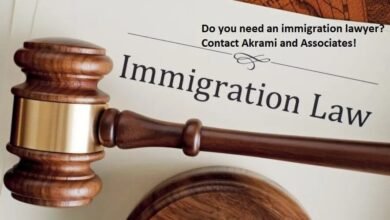
Green Card Sponsorship in California: Who Qualifies?
"Green Card sponsorship in California allows U.S. citizens & employers to sponsor family or workers for permanent residency. Learn who qualifies."
Green Card sponsorship in California is a pathway for foreign nationals to obtain permanent residency in the United States. The process involves a U.S. citizen or lawful permanent resident (LPR) sponsoring a family member, or an employer sponsoring a foreign worker for employment-based residency. California, being a hub for immigrants, sees a high volume of Green Card sponsorship each year. Understanding who qualifies for sponsorship is crucial, as eligibility depends on various factors, including family relationships, employment skills, and immigration policies. This article explores the different categories of Green Card sponsorship in California, the requirements, and the steps involved in the process.
Navigating Green Card sponsorship in California can be complex, but knowing the eligibility criteria simplifies the journey toward permanent residency. Whether through family-based or employment-based sponsorship, applicants must meet specific requirements and follow legal procedures. With California’s diverse immigrant population, many individuals benefit from these pathways to secure their future in the U.S. By understanding the process and seeking proper legal guidance, sponsors and applicants can increase their chances of a successful Green Card sponsorship .
Understanding Green Card Sponsorship in California
Family-Based Green Card Sponsorship
Family reunification is a primary goal of U.S. immigration policy. U.S. citizens and lawful permanent residents (LPRs) can sponsor certain relatives for a Green Card sponsorship . The eligibility depends on the sponsor’s immigration status and the relationship with the beneficiary.
Immediate Relatives of U.S. Citizens
U.S. citizens can sponsor their spouses, unmarried children under 21, and parents without facing annual visa limits. These applications are processed faster compared to other family preference categories.
Family Preference Categories
If the sponsored relative does not fall under the immediate relative category, they may qualify under one of the four family preference categories:
F1: Unmarried adult children (21+) of U.S. citizens
F2A & F2B: Spouses and unmarried children of LPRs (F2A for under 21, F2B for 21+)
F3: Married children of U.S. citizens
F4: Siblings of U.S. citizens (if the sponsor is at least 21 years old)
Each category has annual visa limits, leading to waiting periods that can span several years.
Employment-Based Green Card Sponsorship
California’s thriving job market makes employment-based sponsorship a common route for skilled foreign workers. The U.S. offers several employment-based (EB) visa categories:
EB-1: Priority Workers
This category is for individuals with extraordinary abilities, outstanding professors/researchers, and multinational executives. No labor certification is required.
EB-2: Professionals with Advanced Degrees or Exceptional Ability
Applicants must hold an advanced degree or demonstrate exceptional ability in sciences, arts, or business. A job offer and labor certification (PERM) are typically required unless applying for a National Interest Waiver (NIW).
EB-3: Skilled Workers, Professionals, and Other Workers
This includes professionals with bachelor’s degrees, skilled workers with at least two years of experience, and unskilled workers in positions that are hard to fill. A PERM labor certification is mandatory.
EB-4: Special Immigrants
This covers religious workers, certain broadcasters, and other special categories.
EB-5: Immigrant Investors
Investors who contribute at least 800,000(or1,050,000 in non-targeted areas) to a U.S. business that creates jobs may qualify.
Other Green Card Sponsorship Pathways
Besides family and employment, other ways to obtain a Green Card sponsorship in California include:
Diversity Visa Lottery: A random selection program for nationals of countries with low U.S. immigration rates.
Asylum or Refugee Status: Individuals granted asylum or refugee status may apply for a Green Card sponsorship after one year.
Victims of Crime (U Visa) or Human Trafficking (T Visa): Certain crime victims assisting law enforcement may qualify.
Eligibility Requirements for Sponsors and Applicants
Sponsor Requirements:
Must be a U.S. citizen or LPR.
Must prove financial ability to support the applicant (Form I-864 Affidavit of Support).
Must meet income requirements (125% of the federal poverty guidelines).
Applicant Requirements:
Must be admissible to the U.S. (no criminal bars, fraud, or health-related inadmissibility).
Must meet the specific criteria for the chosen sponsorship category.
The Application Process
File a Petition: The sponsor submits Form I-130 (family-based) or the employer files Form I-140 (employment-based).
Wait for Visa Availability: Preference categories may have long waiting periods.
Submit Green Card sponsorship Application: Once a visa is available, the applicant files Form I-485 (if already in the U.S.) or undergoes consular processing.
Attend Biometrics and Interview: USCIS conducts background checks and interviews.
Receive Decision: If approved, the applicant becomes a lawful permanent resident.
Common Challenges and How to Overcome Them
One of the biggest challenges in Green Card sponsorship is the lengthy processing time, especially for family preference categories and employment-based visas with annual limits. Applicants in these categories often face years of waiting due to backlogs, particularly for nationals from high-demand countries like India, Mexico, and the Philippines. To navigate this, applicants should regularly check the Visa Bulletin published by the U.S. Department of State to track priority dates and estimate wait times. Additionally, exploring alternative visa options—such as adjusting status from a work visa (H-1B, L-1) or applying for an EB-1 or National Interest Waiver (NIW) if eligible—can help expedite the process.
Another common hurdle is meeting the financial sponsorship requirements. U.S. sponsors must demonstrate sufficient income (at least 125% of the federal poverty guidelines) to support the immigrant, which can be difficult for some families. If the primary sponsor’s income falls short, they can use a joint sponsor—a U.S. citizen or LPR who meets the financial criteria—to strengthen the application. Additionally, assets such as property or savings can sometimes supplement income requirements. Consulting an immigration attorney can help applicants explore all possible solutions, especially in complex cases involving inadmissibility issues or prior visa denials. Proper preparation and legal guidance significantly improve the chances of a successful Green Card sponsorship .
Read More: 🌎 How to Get a Green Card: A Complete Step-by-Step Guide
Conclusion
Green Card sponsorship in California offers multiple pathways for immigrants seeking permanent residency. Whether through family ties, employment, or special programs, understanding the eligibility criteria is essential for a successful application. Each category has its own requirements, processing times, and challenges, making it crucial for applicants to prepare thoroughly.
With California’s dynamic economy and diverse population, many individuals find opportunities to build a future in the U.S. By following legal procedures, meeting financial obligations, and seeking expert guidance when needed, sponsors and applicants can navigate the immigration system effectively. The journey to a Green Card may be lengthy, but the benefits of permanent residency make it a worthwhile pursuit.
FAQs
Who can sponsor a Green Card sponsorship in California?
U.S. citizens and lawful permanent residents can sponsor family members, while employers can sponsor foreign workers based on job qualifications.
How long does the sponsorship process take?
Processing times vary; immediate relatives may take 1-2 years, while preference categories can take several years due to visa backlogs.
Can I sponsor a friend for a Green Card sponsorship ?
No, U.S. immigration law only allows sponsorship for qualifying family members or employees.
What if my income is too low to sponsor someone?
You may use a joint sponsor who meets the financial requirements to support the application.
5. Can I apply for a Green Card without a sponsor?
Yes, through programs like the Diversity Visa Lottery, asylum, or special immigrant categories.







